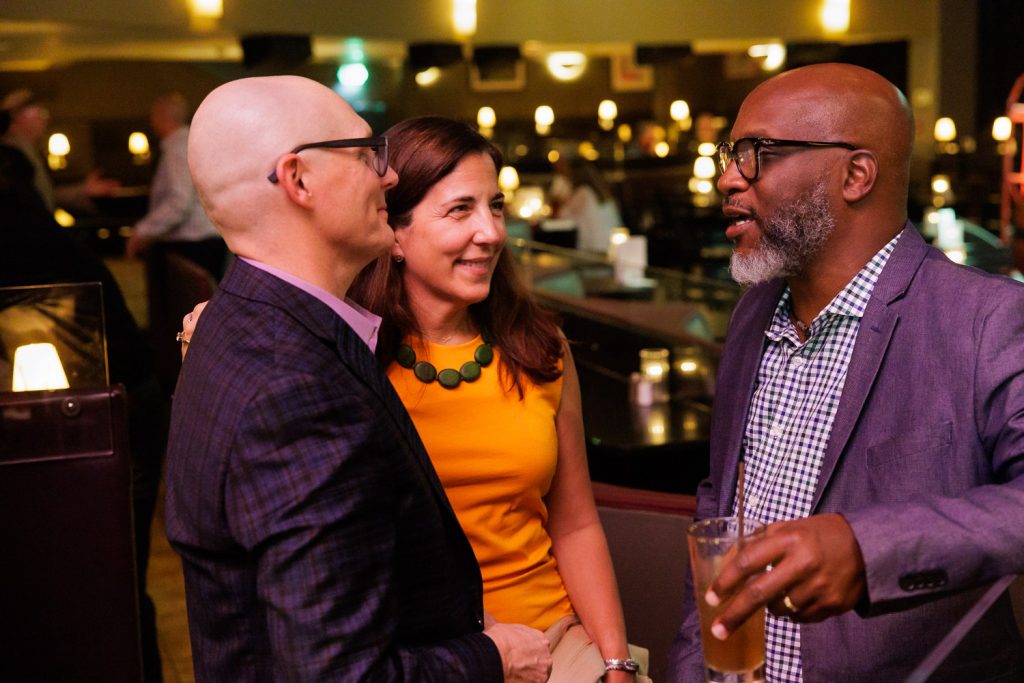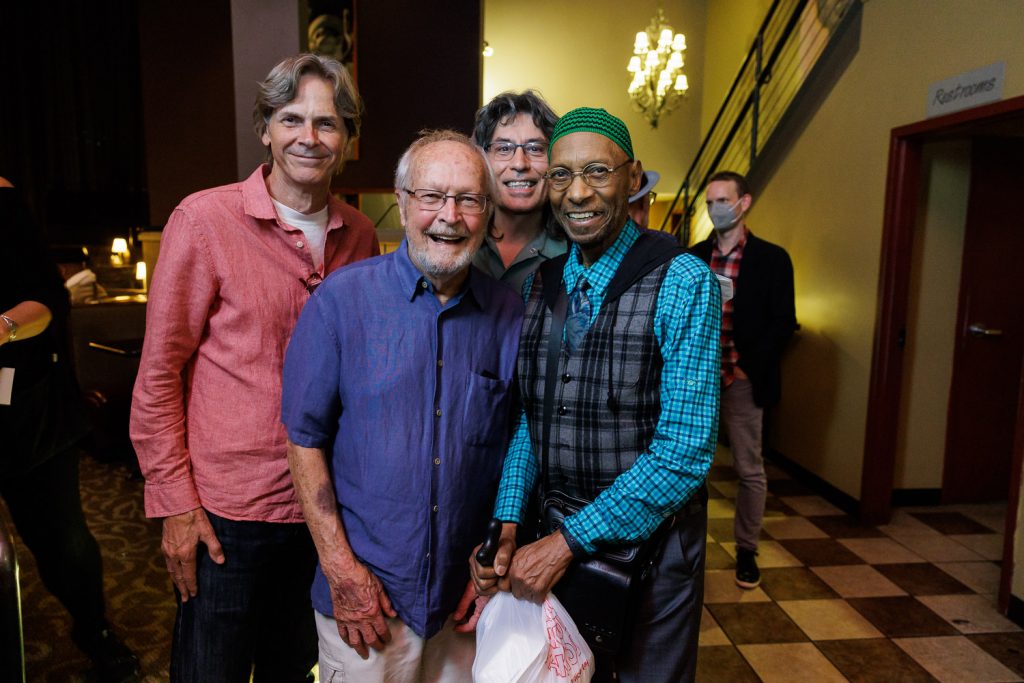Thomas Marriott Album Release: “Live From the Heatdome”
The Thomas Marriott Quartet featuring Orrin Evans, Essiet Essiet and Mark Whitfield, Jr. play to a full house at Jazz Alley
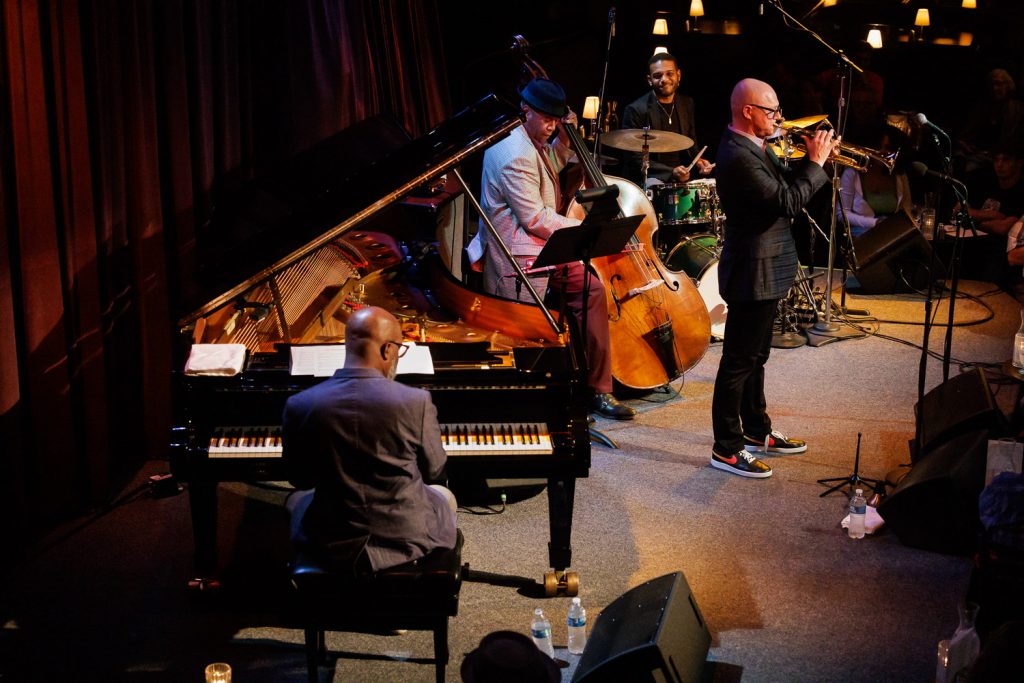
Night after night, week after week, jazz performances take place in the city of Seattle that inspire the local jazz community. They take place in clubs, dive bars, theaters and concert halls, featuring national and international jazz artists as well as prominent resident artists from the dynamic Seattle jazz scene. On occasion, an individual jazz performance serves as a signpost of things to come. The September 26 performance of the Thomas Marriott Quartet at Jazz Alley was all of the above. Marriott had assembled a stellar quartet to celebrate the release of his fourteenth album as a leader, Live From the Heatdome (Imani, 2022).
The stage at Jazz Alley has seen the best of the best since its opening in 1980 as an intimate bistro in the University District. For the first six years of the club, it was common to see an artist of international prominence perform with a supporting cast of Seattle jazzers such as Chuck Deardorf, Dean Hodges, Marc Seales and Jerry Granelli among others. After moving to its more spacious digs downtown in 1986, full touring bands were and are featured, with Seattle based performances becoming less common. Over the years, there have been periods when Monday nights were reserved for the local scene, either in the form of an individual artist’s show, or a jam session that featured top Seattle players such as Hadley Caliman and Don Lanphere. Taking on Marriott’s album release was a rarity that needed support from the Seattle jazz community. That support was received in abundance with the club nearly full house.
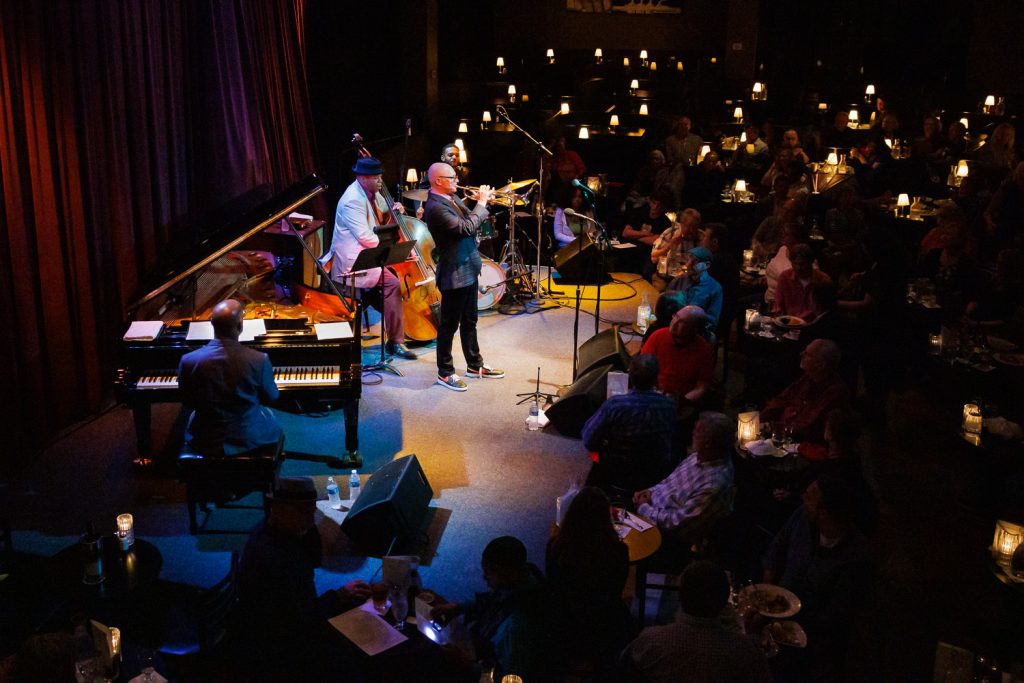
Marriott has had a musical connection with Philadelphia based pianist Orrin Evans since a chance meeting at a jazz festival in Idaho over a decade ago. Live From the Heat Dome is the fourth release from the trumpeter that features Evans. His appearance, along with legendary bassist Essiet Essiet and sensational drummer Mark Whitfield, Jr., gave the performance a huge kickstart, with Marriott delivering a top flight performance of original tunes and a triad of well chosen standards.
The quartet started with Marriott’s “Tale of Debauchery,” extracted from his Urban Folklore (Origin, 2014) album that featured Evans on piano. On this evening, it served as a vehicle for Marriott to find his sound and cadence, serving up a long solo that began with longer tones and finished with a flurry of rapid fire runs. Evans, Essiet and Whitfield were immediately playful with the tune, something that would continue throughout the ninety minute set in plenitud.
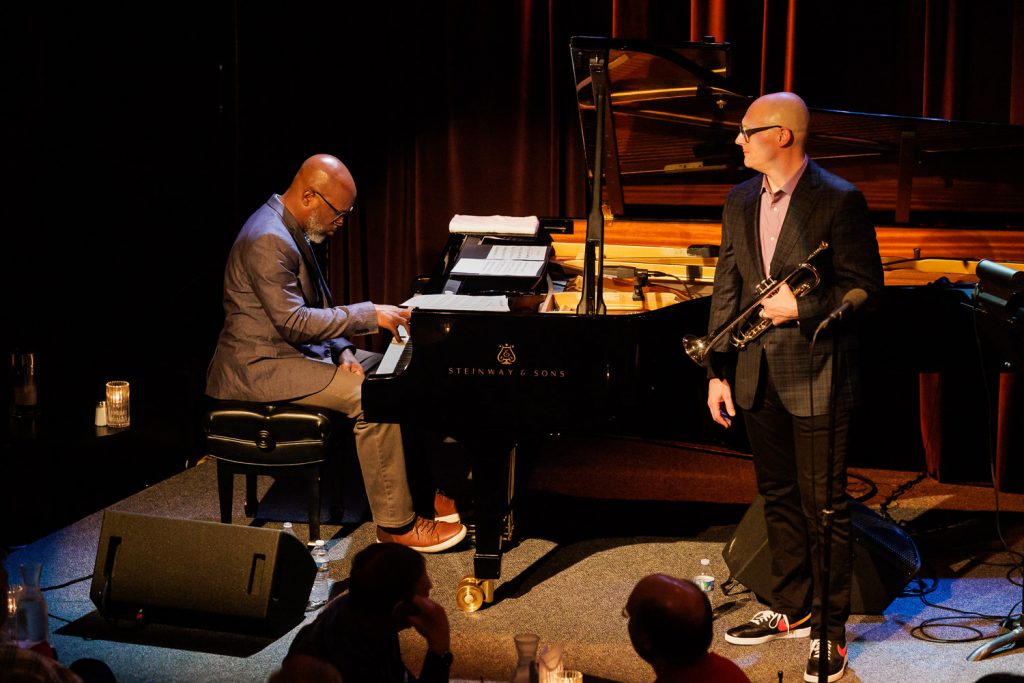
“Front Row Family,” an ode to Marriott’s uber-supportive family over the years, was a mood changer that featured his ultra refined trumpet tonality that served as a warm invite for the audience to join in the intimacy of the moment. Essiet’s solo was a telltale sign of his unique artistry, his exquisite sound framing intricate passages and chordal brilliance. Marriott for his part appeared to be just getting started, not quite unleashing the hounds, so to speak.
“Mo-Joe,” Marriott’s homage to vibraphonist Joe Locke pushed the set forward into an uptempo, swinging foray into his post-bop, modernist leanings. His solo and that of Evans were telltale statements of their deep connection to the blues and the swing rhythm that defines the Black American art form they so ably express. Just as strongly, Evans launched into a quiet, beautifully harmonic intro to Marriott’s “Chick’s Lullaby,” serving as a beautiful interlude of quiet focus and meditative thought. In a tune dedicated to his wife, Marriott’s muted soliloquy was embracingly romantic and had a magical impact on the audience, roping them into the emotional aspect of the performance.
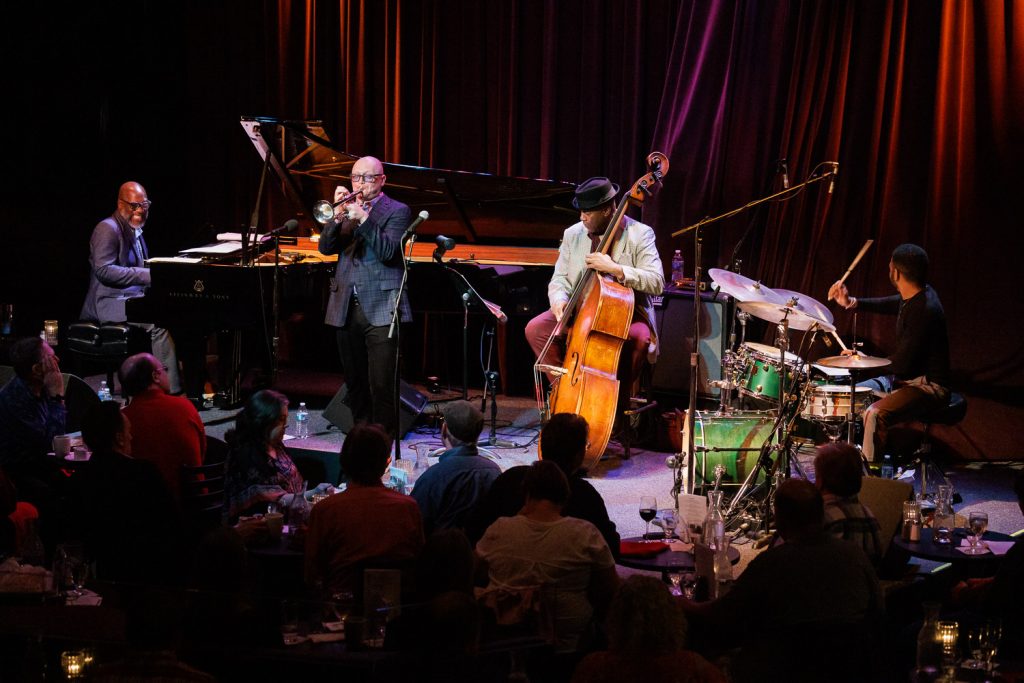
Essiet’s thunderous intro to Wayne Shorter’s “General Assembly,” served as a passageway to melodic freedom for the quartet, with Marriott’s searing solo setting the bar high for his positively respondent bandmates. Evans has always had a percussive aspect to his playing that has supplied a degree of separation between him and the majority of pianists in modern jazz. His solo seemed to ignite Whitfield on drums, whose focused intensity and supportive dynamics were unabashedly a highlight of the entire performance. In essence, Shorter’s thunderous composition seemed to light the fuse for the next few tunes. Easing into Vernon Duke’s classic, “I Can’t Get Started,” the quartet seemed to settle into a comfortable place with Evan’s playfully daring solo and Essiet’s beautifully pensive offering leading the way.
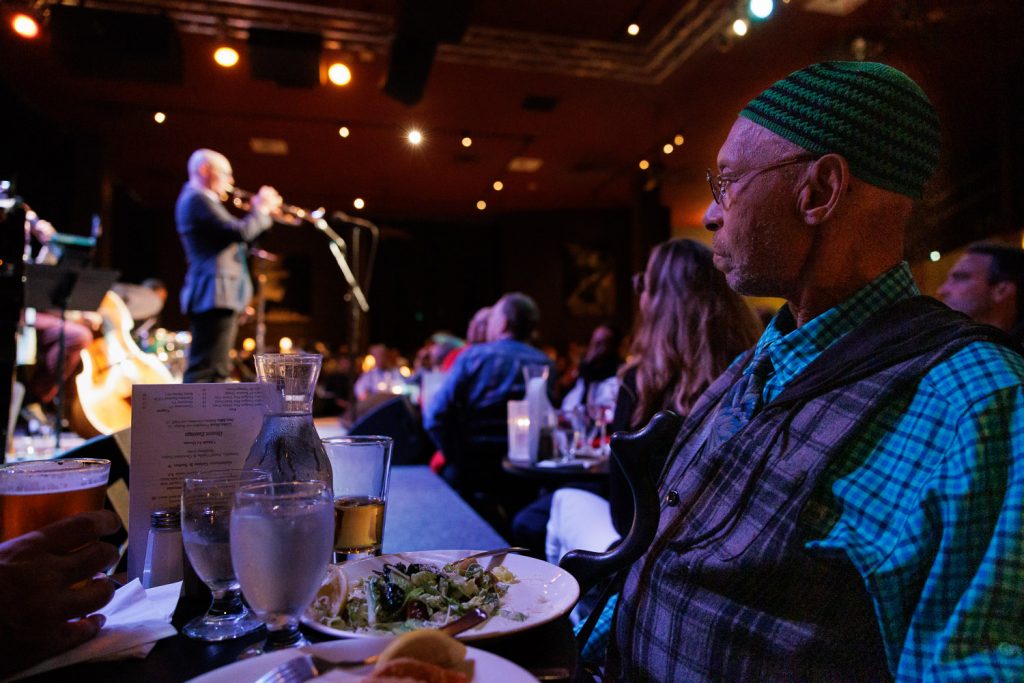
“The Joint Chiefs,” which appears on Live From the Heatdome, and “Both Sides of the Fence,” the title track from Marriott’s 2007 release, operated at an elevated degree of intensity and featured Whitfield’s spirited playing. Marriott and Evans exchanged glancing blows back and forth with the young drummer, the spirited response of the near capacity crowd seemingly lifting the roof off the place. The finale, Duke Ellington’s “Things Ain’t What They Used to Be,” was a fitting ending for the band, wrapping up their fourth consecutive night on a high. The foursome had spent two nights at Frankie’s in Vancouver, followed by a night in Bellingham. They had earned their repose.
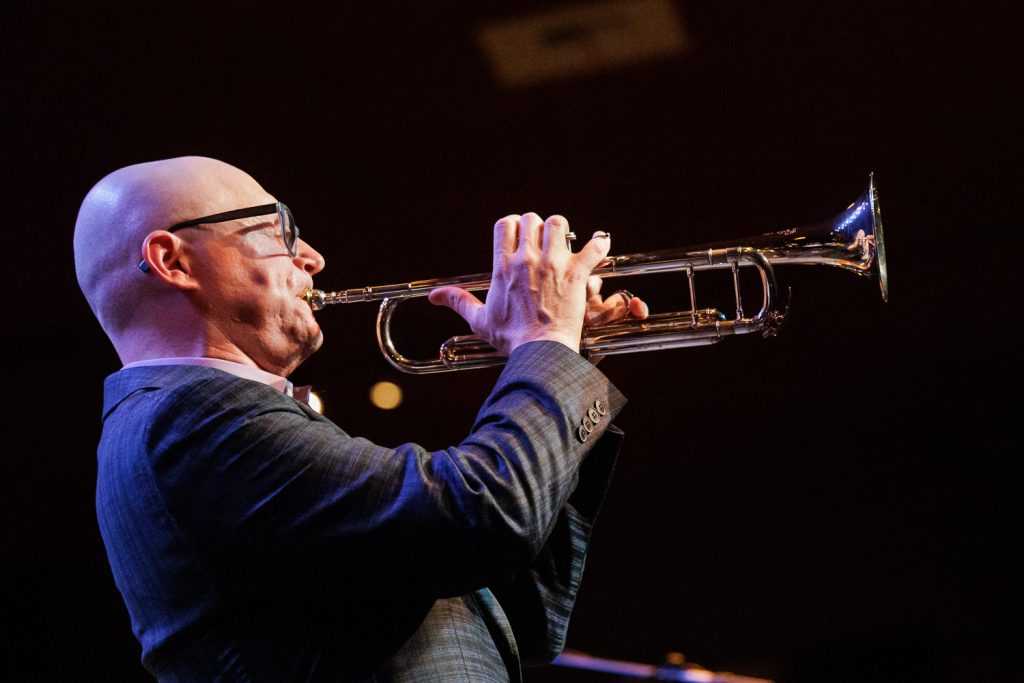
Jazz Alley has never been much of a “hang” spot after a gig since the U District days when it was all of that. This evening was an exception, with an audience that represented a broad cross-section of the Seattle jazz community. It seemed everyone wanted a piece of the trumpeter, a prime indicator of the love and respect that Marriott inspires in his home town. With community elders like Julian Priester, Jim Wilkie and Marvin Thomas in the room and many of the city’s prominent jazz musicians as well, the respect factor was plainly evident. As far as the love factor, that was something felt upon entering the room, was elevated by the performance, and expressed with warm embraces post-show. For anyone that has spent any amount of time on the Seattle jazz scene, and at Jazz Alley in particular, this was a beautiful and welcoming sight. Let’s hope it portends to a re-ignited relationship between Seattle’s best jazz musicians, and its city’s most renowned stage.
